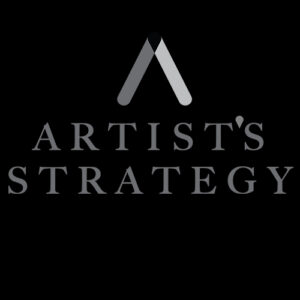
One of the built-in protections offered by our chaotic lives and structureless jobs is their ability to shield us from taking on too many things at a time. In a sense, because our days can feel so flux and unpredictable, we’re usually forced to narrow our focus and fasten our attention on a single task to stay sane. This can be a powerful and protective silver lining: Can you imagine producing a short film, doing an off-Broadway play, and facilitating a regular script-reading club all at the same time? Hard pass.
And yet, limiting ourselves to one self-produced project at a time deprives us of so many of the amazing benefits that come from being one’s own boss in the first place. Now you are probably asking, “How, Joshua? How can we possibly add even more to our plates? We can’t all be the next Shonda Rhimes like you are.”
OK, so maybe I took some liberties with the Shonda comparison, but the part about you asking me “how?” is almost certainly accurate. And, so, I will tell you how. But first, a short explanation of the time-boxed project:
These projects usually last three to five years, and include things like story and script development, as well as seeking investors and creative team turnover. Mid-term projects lasting between one and three years are substantive enough to allow for regular content updates and a meaningful improvement of your craft, but carry a little bit less risk and speculation. Finally, short-term projects that last up to six months allow for rapid relationship building, an immediate creative outlet, and something to simply talk about with your supporters, reps, and colleagues.
I encourage artists to be managing three self-produced projects at any given time. The trick, of course, is having these projects develop along parallel timelines (long, mid, and short term), allowing you to use incremental working patterns to your advantage. And because these projects are intended to be collaborative, they’ll give you a great reason to shatter your illusions of control and practice delegating work to others!
The other reason we encourage our clients to juggle three self-produced projects at a given time is to maximize the objective-driven potential of their work. What do I mean? Let me start with this simple premise: All self-produced projects need to meet at least one of the following objectives to be of true value:
But here’s the thing: It’s near impossible for a single self-produced project to meet many of the above objectives. That’s what I mean by maximizing objective-driven potential: Three self-produced projects will surely check off more of these criteria than just one will.
And there’s no doubt that devoting your attention to a given task is preferable to being otherwise sloppy and scatterbrained. But the problem with focusing on only one project is we often put unrealistic and uninformed expectations on their results. By putting all of our eggs into a single creative basket, we load that basket up with false hopes, insane pressure, and other baggage (i.e. “This project needs to work out because I want to show-run and star in my own show in 3 years.”)
Your big dreams, however, won’t result from the surprise success of a single project. You’ll likely need to spread your efforts incrementally across a wider range of projects, in an effort to develop your under-experienced voice and have a diverse portfolio of work to show off while you’re learning to pitch your big break. Now is the time to embrace long-term diversity over short-term fixation and learn to love to multi-task.
______________________________________________________________________________
Go Ahead, Give Yourself Some Credit
Why Are Your Goals Getting in the Way?


Artist's Strategy offers artists the opportunity to strategize and create tactical next steps towards a successful, fulfilling career. Based on tested business principles, Artist's Strategy helps you design a tangible path towards a sustainable future. Incorporating and using the basic tenets of a healthy business, we will help you set a one, three or five-year-plan that will work for you and keep you on track to seeing real results. With Artist's Strategy, you will work alongside founder Joshua Morgan to identify the strengths and opportunities of your business and learn more about how to stabilize and grow. How long and how frequently you work with Artist's Strategy depends on your individual needs and resources. Contact us to discuss a plan that could work for you.
Read Full Profile© 2021 TheatreArtLife. All rights reserved.

Thank you so much for reading, but you have now reached your free article limit for this month.
Our contributors are currently writing more articles for you to enjoy.
To keep reading, all you have to do is become a subscriber and then you can read unlimited articles anytime.
Your investment will help us continue to ignite connections across the globe in live entertainment and build this community for industry professionals.